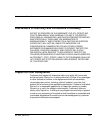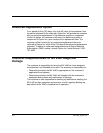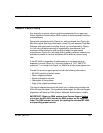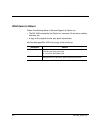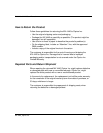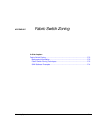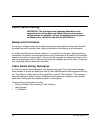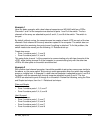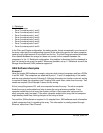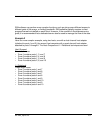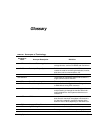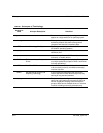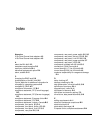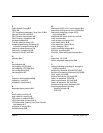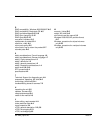
MediaVault 4440 User Manual
E-4
MV 4440_Ciprico Inc.
1:1 Relational
Create eight zones:
• Zone 1 contains ports 1 and 5
• Zone 2 contains ports 2 and 6
• Zone 3 contains ports 1 and 7
• Zone 4 contains ports 2 and 8
• Zone 5 contains ports 3 and 5
• Zone 6 contains ports 4 and 6
• Zone 7 contains ports 3 and 7
• Zone 8 contains ports 4 and 8
In the Plain and Simple configuration, the setting works, though occasionally one channel of
the array might test the corresponding channel of the other array and/or the other computer,
causing a very slight amount of extra traffic on the line. The Host-Grouped method eliminates
this crosstalk between the arrays, but does not correct for the crosstalk between the
computers. In the 1:1 Relational configuration, this problem is alleviated, but the drawback is
that it is harder to set up on the switch. Whenever possible, set up 1:1 Relational zones if the
Storage Area Network (SAN) software supports it.
SAN Software Examples
Example 1
Here is a simple SAN software example, using two dual-channel computers and four vPODs
in an MV 4440. The computers are attached to ports 1, 2 and 3,4 respectively of the switch,
and the array attached to ports 5 through 8. Although this setup can function unzoned, zoning
is required to keep the computers from "chatting" with each other, rather than the array. Two
zones are required. See Example 2 above for the zoning.
At first, everything seems OK, until one computer formats the array. The other computer
thinks the array is unformatted and tries to erase the array whenever possible. If one
computer writes files to the array, the directory will be in that computers' cache and the
other computer might not see it. If the other computer writes to the array, the first computer
might destroy those files, thinking that part of the array is blank.
To avoid this, SAN software is required. In it's simplest form, SAN software sends information
to both computers that it is updating the array. This information is usually passed through
Ethernet, rather than Fibre Channel.



